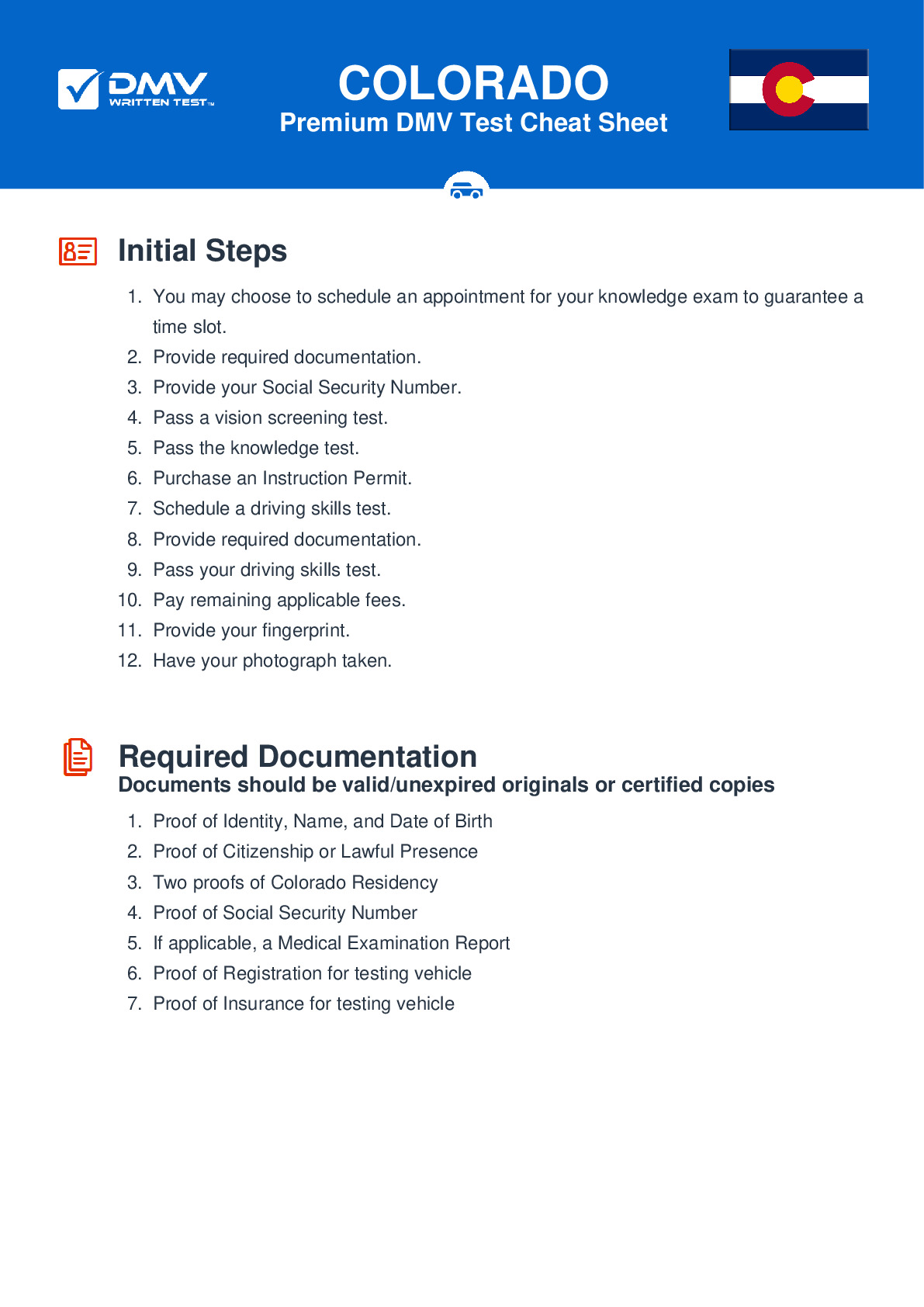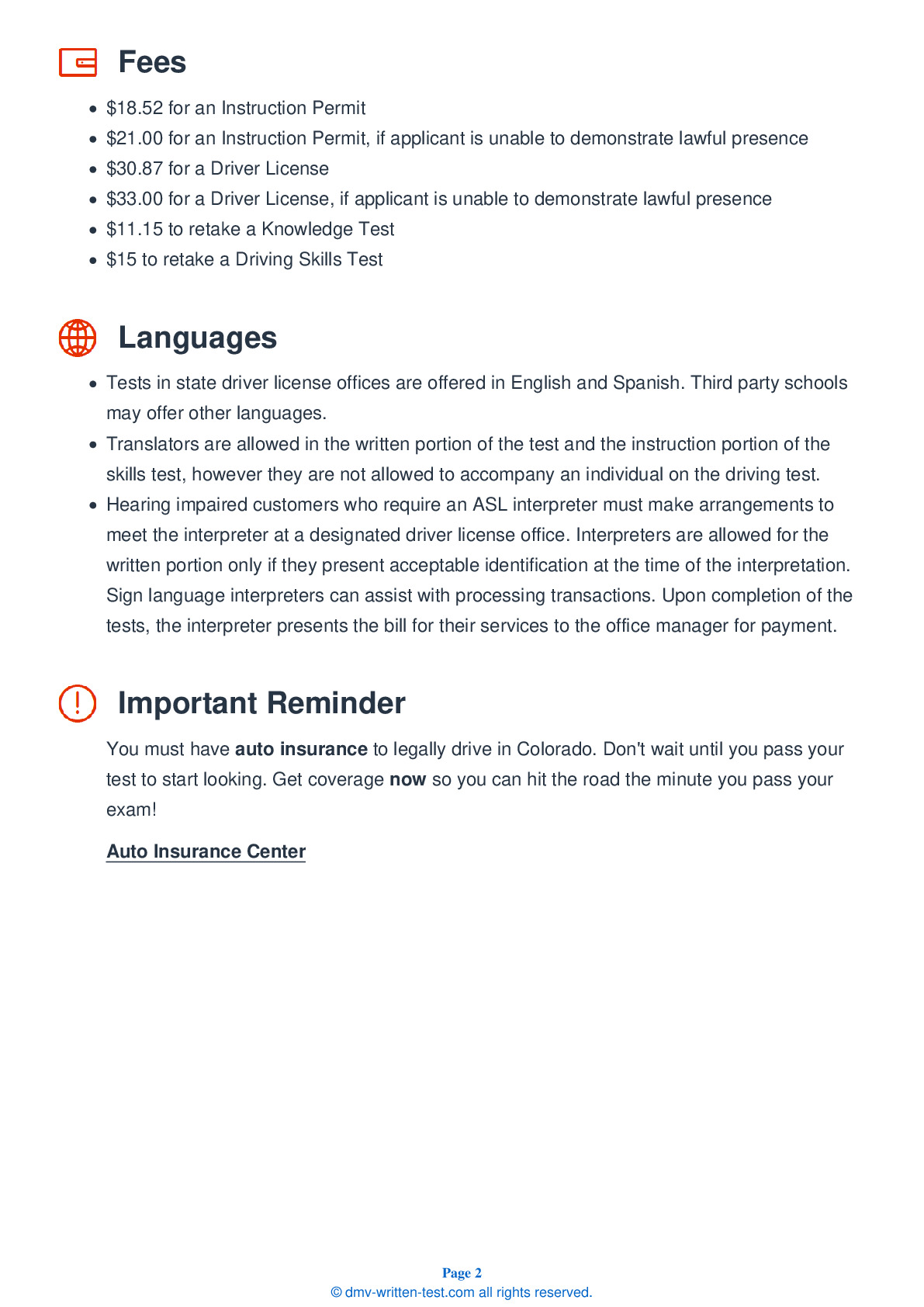2025 Colorado Permit Test 22
The following questions are from real DMV written tests. These are some of the actual permit questions you will face in Colorado. Each permit practice test question has three answer choices. Select one answer for each question and select "grade this section." You can find this button at the bottom of the drivers license quiz. For a complete list of questions and answers for Colorado please visit https://cheat-sheets.dmv-written-test.com/en/colorado/car.
Number of Tests
Number of Question
Passing Score
1. The driver's left arm and hand are extended upward. This hand signal means that the driver plans to:

Explanation
If a driver's left arm and hand are extended upward, they are indicating that they intend to turn right. Adjust your driving accordingly if following a driver who is using this hand signal.
2. A speed limit is:
Explanation
A speed limit is the maximum or minimum legal speed you can travel on a road under ideal conditions. You may drive more slowly than the posted speed, but it is illegal to drive any faster. You must drive more slowly where signs or signs indicate a school zone or work zone speed limit. If conditions such as road construction or bad weather make the posted speed unsafe, drive under the speed limit.
3. Which is not a factor in determining the distance that it takes to stop your vehicle?
Explanation
The distance required to stop your vehicle depends on perception time, reaction distance, and braking distance. This changes with speed and road conditions.
4. A “No stopping” sign means that, unless directed to do so by a police officer, you may stop only:
Explanation
A "No stopping" sign means you can only stop to obey a traffic signal, to obey a police officer, or to prevent a conflict with another vehicle.
5. When parking uphill on a hill or incline with a curb:
Explanation
To keep your vehicle from rolling into traffic when parked facing uphill, turn your front wheels sharply away from the curb. If you are parking uphill on a street that has no curb, turn the wheels sharply toward the edge of the road.
6. When two vehicles enter an intersection from different highways at the same time, which vehicle must yield the right-of-way?
Explanation




